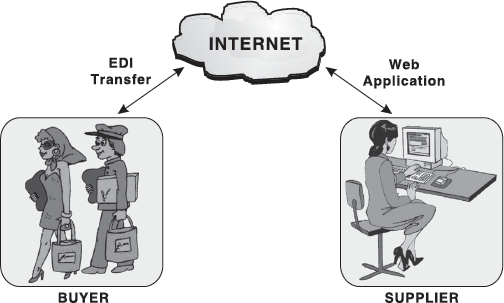Chapter 17
The Internet
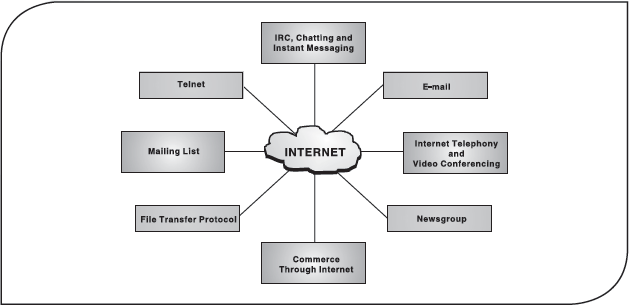
The Internet is the world's largest computer network made up of thousands of networks worldwide. The chapter unravels the mysteries of this widely popular computer concept and helps in building an understanding of the basic Internet structure and processes. The discussion begins with the evolution of the Internet. It is continued with basic Internet terms and how to get connected to it. This chapter also highlights various Internet applications and its languages. The discussion is concluded with the various Internet languages used in the development of Web pages.
After reading this chapter, you will be able to understand:
Internet—the world's largest computer network
The evolution of Internet
The basic terms of Internet
The basic requirements for getting connected to Internet
The various applications of Internet
17.1 INTRODUCTION
In the past two decades, computers have played a significant role in our everyday life. With the growth in popularity and networking of computers, intercommunication between different computers became easier, which led to the evolution of Internet. It is the most talked about computer technology in recent years. For a majority of people, who are unaware of computer technology, Internet depicts some enigmatic computer gizmo, which has something to do with games, music, and generally entertainment. However, Internet is a much broader concept than mere entertainment and recreational activities. It is revolutionizing and enhancing the ways of human interaction and communication.
The word Internet is derived from two words: interconnection and networks. Also referred to as “the Net,” Internet is a worldwide system of computer networks, that is, a network of networks, which allows the participants (users) to share information. It consists of thousands of separately administered networks of various sizes and types. Each of these networks comprises tens of thousands of computers. Moreover, the total number of users of the Internet is known to be in millions. This high level of connectivity encourages an unparalleled degree of communication, resource sharing, and information access. It is probably the most powerful and important technological advancement since the introduction of the desktop computer. In order to benefit from what the net has to offer, a basic understanding of what it is and how it works is helpful.
17.2 EVOLUTION OF INTERNET
The foundation of Internet was laid in 1969 by the Department of Defense (DoD) of United States of America. They wanted to create a computer network that could continue to function in the event of a disaster, such as a nuclear war. Even if a part of the network was damaged or destroyed, the rest of the system would continue to work. That network was known as ARPANET (Advanced Research Projects Agency Network), which linked US scientific and academic researchers. It was the forerunner of today's Internet.
Later in 1980, another agency, the National Science Foundation (NSF), created a new network of computers based on ARPANET, called NSFNET, which turned out to be more efficient and capable. Initially, NSFNET was designed to link five super computers situated at the major universities of NSF and allowed only academic research. Over the time, this network expanded to include sites for business, universities, government, etc. and finally becoming a network consisting of millions of computers, now known as the Internet.
In the 1980s, Usenet newsgroups and electronic mail (e-mail) came into picture. To keep track of the information on the Internet, indices such as archie and the wide area information server (WAIS) were also created in this decade. To give users an easy-to-use interface to work with, the University of Minnesota created Gopher, a simple menu-driven system for accessing files.
Internet really became popular in the 1990s after the development of the World Wide Web (WWW). Before that, it was open for a handful of sites only. It is amazing that as recently as June 1993, there were only 130 Web sites, but now there are millions.
With the growth of Internet, the quality, quantity, and variety of information also grew. The Internet today is a repository of every type of information. Nowadays, an Internet user can get all sorts of information ranging from how to add to the design of a functional spaceship to choosing a product for personal use (Figure 17.1).
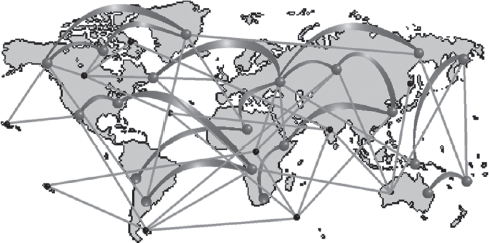
Figure 17.1 Hypothetical Diagram of the Internet
17.3 BASIC INTERNET TERMS
Now let us familiarize ourselves with some basic Internet terms.
WWW: The World Wide Web (abbreviated as the Web or WWW) is a collection of linked documents or pages, stored on millions of computers and distributed across the world. The concept of the Web began at CERN (the European Center for Nuclear Research), Geneva, Switzerland, in the year 1989. Since then, WWW is the most popularly used Internet subnetwork. One of the main reasons that led to its popularity is that it provides information in multimedia form, that is, in more than one medium such as, text, graphics, video, and audio. Further, it provides a simple and consistent way of accessing the information available on the Internet by using hypertext system. In hypertext system, the documents are connected to other related documents on the Internet through links. The Web uses a specific Internet protocol called HTTP to support hypertext documents.
Note: Although the WWW is often referred to as the Internet, they are actually two different concepts. The WWW is one of the most popular services available on Internet.
Web Page: The hypertext documents on the WWW are known as Web pages. A Web page is written in a language called HTML (hypertext markup language) which enables to embed hypertext links (discussed later in this section) in the document. Using these hyperlinks, the user can jump from one Web page to another.
Note: Web pages are also known as HTML documents.
Web site: A Web site is a set of related Web pages (linked through hypertext links), published by an organization or an individual. Typically, a Web site contains a home page along with other additional Web pages. Each Web site is accessed by its own address known as URL (uniform resource locator). All the Web sites on the Internet constitute the WWW.
Home Page: When you browse the WWW, you will often see the term “home page.” A home page (also called index page) is the starting point or a doorway to the Web site; it refers to the Web page that identifies a Web site and contains the hyperlinks to other Web pages in the Web site. It may contain links to other Web sites also. Like the table of contents of a book, the home page usually provides an overview of what could be found at the Web site. If there is not much information, the home page may be the only page of the Web site. However, usually you will find at least a few other pages.
Browser: A browser (short for Web browser) is a special software that enables users to read/view Web pages and jump from one Web page to another. It is the software that is needed to find, retrieve, view, and send information over the Internet. The most popular browsers are Microsoft Internet Explorer and Netscape Navigator.
Browsers are of two types:
- Graphical Browsers: allow retrieval of text, images, audio, and video. Navigation is accomplished by pointing and clicking with a mouse on highlighted words and graphics. Netscape Navigator, Internet Explorer, and Mozilla are graphical browsers.
- Text Browsers: provide access to the Web in text-only mode. Navigation is accomplished by highlighting emphasized words on the screen with the arrow up and down keys, and then pressing the Enter key to follow the link. Lynx is an example of a text-based browser (Figure 17.2).
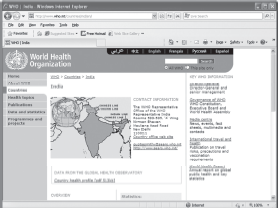
Figure 17.2 A Web Page on a Graphical Browser
URL: Each Web page has a unique address, called a URL (uniform resource locator), which identifies its location on the Internet. Usually, the format of an URL consists of four parts: protocol, name of the Web server (or domain name), path, and filename. Here is an example, http://www.xyz.com/tutor/start/main.htm. The structure of this URL is:
- Protocol: http
- Web server name/domain name: www.xyz.com
- Path: tutor/start/
- File Name: main.htm
The first part of the address, the part before the colon, is the protocol. Most of the time you see http (hypertext transfer protocol) for accessing a Web page. Apart from http, you could also find other protocols such as ftp (file transfer protocol), news (news server), and telnet (for accessing remote computers). After the protocol, comes the domain name. The protocol and the domain name are separated by colons and slashes (Figure 17.3).

Figure 17.3 Uniform Resource Locator
A domain name is a unique name that identifies a particular Web site and represents the name of the server where the Web pages reside. They are the human-readable addresses and hence are easier to remember. Domain names have two or more parts separated by dots. The letters occurring after the dot (.) identify the domain type. A domain type represents the type of organization or countries to which the Web server (sometimes called host computer) belongs.
THINGS TO REMEMBER
Domain Types
Some of the domains that are typical on the Internet are:
| com | Commercial and for-profit organizations |
| edu | Colleges and universities (education providers) |
| gov | Federal government agencies |
| mil | US military sites |
| net | Internet infrastructure and service providers |
| org | Miscellaneous and non-profit organizations |
Dozens of domain types have been assigned to identify and locate files stored on host computers in countries across the world. These are referred to as two-letter Internet country codes and have been standardized by the International Standards Organization (ISO). For example, uk for the United Kingdom, de for Germany, au for Australia, and in for India. The last part of a URL consists of the path and the file name. Path name specifies the hierarchic location of the said file on the computer. For instance, in http://www.xyz.com/tutor/start/main.htm, the file main.htm is located in start, which is a subdirectory of tutor.
Hypertext: The hypertext is a system that provides a simple and consistent way to organize large data (that includes text, images, pictures videos, etc.) available on the Internet. In hypertext systems, the documents contain links to other related documents on the Internet. These links are called hyperlinks, hotlink, or simply links. A hyperlink is used to jump to another part of the same page or to load a different Web page. Usually hypertext links appear in a different colour (typically in blue and underlined) from the rest of the text. When the cursor is moved over a text link or over a graphic link, it will change from an arrow to a hand. The hypertext words often provide a hint about the connected page. When the user returns to a page with a link he/she had already visited, the hypertext words will often be in a different colour (usually magenta), indicating that the link has already been used. However, the user can certainly use that link again (Figure 17.4).
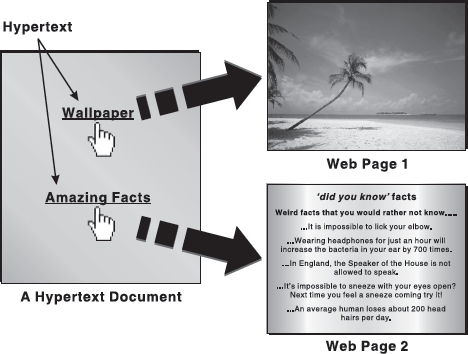
Figure 17.4 Hypertext Links
Hyperlinks are the foundation of the Web and the operation of the Web relies primarily on them as it is a means of information retrieval. Producing hypertext for the Web is accomplished by creating documents with HTML (hypertext markup language).
Internet Service Provider (ISP): An ISP is an organization that connects its subscribers’ computer using modem to the Internet. The connections can be provided by telephone lines, cable lines, or wireless connections. In order to use the Internet connection, the user has to first log on to the host computer using the username and password provided by the ISP. Some of the well-known ISPs are America Online (AOL), Microsoft Network (MSN), Yahoo!, etc.
While choosing an ISP, many factors should be kept in mind for subscribing. First, the user should check the speed and consistency of the Internet access. He/she should also check ISP's reliability, that is, whether the ISP provides consistent access to the Internet or does it have frequent downtimes. Apart from these two criteria, the price of the ISP and other additional services provided by it should also be considered. For example, many ISPs provide free Web space so that users can create their own Web site, free e-mail address, and much more. Last but not the least, the user should also check whether the ISP provides a round-the-clock technical assistance.
Web Server: A server is a computer equipped with server software, which provides a specific kind of services to client software running on other computers. It can refer to a particular piece of software, for example, a Web server, or to a machine on which the server software is running. A Web server receives request from the clients, processes this request, and sends the result back to the client. In other words, Web server fulfils the client's (browser) requests (Figure 17.5).
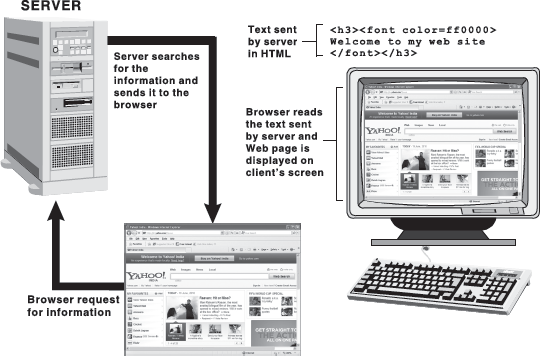
Figure 17.5 Data Transfer from Web Server to Browser
To view a Web site, the browser sends a request to the server. On receiving the request, the server sends the appropriate Web page to the client's machine. The client's machine (browser) receives the information in the form of HTML commands. The browser interprets the HTML, finds all the pictures (or other types of media), and displays the information onto the user's screen.
Download and Upload:Download refers to the act of transmitting data from a remote computer on the Internet or other network to one's own computer. When the user downloads a file, he/she is actually copying a particular file from the remote computer and placing it on his/her hard drive. Downloading allows a user to save file for later use, thereby reducing the time spent online and the corresponding charges.
Upload is just the opposite of download. Upload refers to the act of transmitting data from local computer to any other computer on the Internet or network. For example, a software company may upload a demonstration of its new software onto the Web so that users can then download the software.
Online and Offline: The term online is commonly referred to the state of being connected to the networked computer system or Internet. For example, if you are browsing the WWW, your computer is said to be online. Being online also refers to any peripheral device (like printer) that is connected to the system and ready to use.
Offline is just the opposite of online; it refers to the state of not being connected to the remote computer or Internet. A printer or other peripheral that is not ready to use is also considered Offline.
17.4 GETTING CONNECTED TO THE INTERNET
Now you are aware of the basic Internet terms, let us shift our focus on how to connect to the Internet. The basic requirements for getting connected to the Internet (Figure 17.6) are discussed in this section.

Figure 17.6 Connecting to the Internet
The Computer: The computer must have at least 386-microprocessor chip with a minimum of 16 MB of RAM. For a good browsing experience, use a faster chip (Pentium III/Pentium IV) with more RAM (128/256 MB). In addition, a colour monitor, with at least 640 × 480 resolution and a capability of displaying a minimum of 256 colours, is also vital. The system should also possess a hard disk, with at least 200 MB of free space, to store Internet software and temporary Internet files. Since the Web is a multimedia medium, you can also enjoy sound on your system with a sound card and a pair of speakers.
Modem: Apart from the previously mentioned configuration, a computer system must have a device called modem, which enables a computer to transmit data over telephone lines. A modem (acronym for modulator–demodulator) is a hardware, which converts digital data into analog signals (that is, modulation) that can be sent over an analog telephone line and convert the analog signal back into digital data (that is, demodulation). Thus, when the modem receives the data from a Web server via telephone system, it reconstitutes the analog signal into digital form so that the computer can understand it. The most critical aspect of the modem is its speed of operation. The speed of modem is measured in kilobits per second (kbps). Modern modem supports 28 kbps to 56 kbps speeds. Modems are of two types:
- Internal Modem: is a card, which is fitted inside the computer with a lead running directly from the computer to the telephone socket.
- External Modem: is a small external box wired between the computer and the telephone socket.
Internet Connection: Before connecting to the Internet, you need to buy an Internet connection from an authorized ISP. The speed of accessing the Internet entirely depends upon the type of connection you bought from the ISP. Some of connections available for the users these days are briefed below:
- Dial-up: A dial-up connection is the access method that uses telephone lines to connect to the Internet. It is the most common way for individuals who use home computers to connect to the Internet. To connect to the Internet by using dial up, the user needs to specify a username, a password, and a telephone number. After the connection is established, the user can start browsing sites on the Internet.
- ISDN: It stands for integrated services digital network and is more common in business and commercial use. It was the first high-speed alternative to regular analog telephone modems. ISDN involves the digitization of telephone network so that voice, graphics, text, and other data can be provided to users from a single terminal over existing telephone wiring. Digital connections have fewer errors in transmission, which means speed of downloading graphics, Web pages, sound, and so on is increased to four times faster than with dial-up modems.
- Cable Modem: A cable modem connects the user to the Internet through a cable television line. Nowadays, many cable companies offer Internet along with television accessibility. A cable modem will typically have two connections, one to the television outlet and the other to the computer. Cable modems not only provide a faster Internet access (10 to 100 times as fast as the dial-up modem), but interactivity to the television also.
- Leased Line: This facility provides reliable, high-speed Internet access ranging from 2.4 kbps to 45 Mbps. A leased line connection is an affordable way to link two or more sites for a fixed monthly charge. Usually leased lines facility can be provided via a fibre optic or copper lines. Leased line service provides a consistent amount of bandwidth and is an excellent way to provide data, voice, and video links between sites.
- DSL: DSL or digital subscriber line service is provided through an existing telephone line, but it works differently than regular analog modem dial-up access. DSL operates over normal telephone lines and it can be used simultaneously with the telephone. DSL can increase the connection speed by as much as ten-fold from a standard dial-up modem.
- Broadband: This type of access is good for remote locations, where ISDN, cable, or DSL are not available. It gives a decent download speed, but to upload data, the user still needs a regular analog modem to dial in, via a telephone line. Satellite connection can be either a two-way service or a one-way service. In case of two-way satellite service, the data are transmitted via satellite to a dish antenna at the user's house. In one-way system, the user needs a conventional modem and telephone link to an ISP. Satellite connection is expensive but sometimes is the only fast option for people who are beyond the service area of cable and DSL providers.
Before deciding the type of Internet connectivity, one should first decide what his requirements are. If the user wants the Internet mainly for sending e-mail, occasional chats, and infrequent browsing, then he should work with regular modem dial-up access. In this case, user should invest in a good-quality 56 kbps modem and a good ISP. If the user is using the Internet frequently for research, downloading or uploading a fair amount of data, to play multi-player games or to use the Internet's multimedia capabilities like live audio or video streaming, then he should look into other high-speed accesses such as cable modem or ISDN.
Internet Software: To connect to the Internet, a computer requires mainly three different kinds of software:
- TCP/IP: TCP/IP, or transmission control protocol/Internet protocol, is the basic communication protocol of the Internet. It allows programs on user's computer to communicate over the Internet. Usually, when you are set up with direct access to the Internet, your computer is provided with a copy of the TCP/IP. Similarly, every other computer that you may send messages to or get information from also has a copy of TCP/IP.
- Dialler Software: This software is provided by the ISP to instruct the modem to dial the telephone number and to identify the user's machine to the access provider's system for access to the network.
- Browser: To use the Internet, a Web browser is essential which allows the user to view the information available on the WWW.
17.5 INTERNET APPLICATIONS
Today, the Internet has grown from a small network to biggest network of computers. Due to this colossal growth, the Internet has become the biggest domain of information. Nowadays, an Internet user has access to a wide variety of services such as e-mail, file transfer, vast information resources, interest group membership, interactive collaboration, multimedia displays, real-time broadcasting, shopping opportunities, and much more. Some of the important services provided by the Internet are briefed in the following few sections (Figure 17.7).

Figure 17.7 Internet Applications
17.5.1 Electronic Mail (E-mail)
Electronic mail, or e-mail, is a fast, easy, and inexpensive way to communicate with other Internet users around the world. It is one of the basic and earliest services of the Internet and the most used application on the Internet too. E-mail overcomes most of the problems and delays of getting a physical document from one person to another. Rather, it has the dual advantage of not only being faster but cheaper to use as well.
Each user of e-mail has a mailbox address to which messages are sent and the mailbox can be accessed from anywhere and at anytime. It does not matter what type of connectivity the user is having, he will always be able to use this service. One can receive and send e-mails from all systems whether it is a Windows PC or a UNIX machine. Not only this, e-mail can also be used to send documents, images, audio, video, and so on as an attachment along with the mail.
17.5.2 File Transfer Protocol (FTP)
The FTP is a set of rules that enables a user to transfer files from one system to another. It was the first service developed for the Internet so that government and educational institutions could easily exchange files. It allows the user to get access to the files stored in the directory of a remote computer that is connected to the Internet. Using FTP, one can upload and download files from the remote computer (known as FTP servers), if he/she has access permission on the remote machine. Though files can be transferred using e-mail, this is not a good choice if the file size is large or when there are many files. FTP sites can consist of hundreds to thousands of files with information on books, music, software, games, images, sounds, multimedia, course ware, etc. FTP can be done using the command prompt, browsers, and various GUI-based FTP software such as CuteFTP and WS_FTP (Figure 17.8).
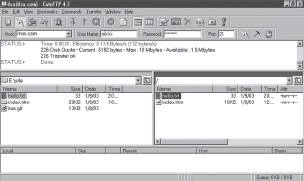
Figure 17.8 FTP Using Graphical FTP Software
17.5.3 Telnet
The word “telnet” is derived from telecommunications and network and is a protocol that allows a user to log on to a remote computer. Telnet is also known as remote login, which means connecting one machine to another in such a way that a person may interact with another machine as if it is being used locally. It means that someone in New Delhi could connect to a computer in the New York City Public Library and search the card catalogue the same way as someone located at a terminal in the library. Once connected, the user's computer emulates the remote computer. When the user types in commands, they are executed on the remote computer. The user's monitor displays what is taking place on the remote computer during the telnet session (Figure 17.9).

Figure 17.9 Remote Login through Telnet
THINGS TO REMEMBER
Telnet
The telnet client computer must run a telnet client application and the telnet server must run a telnet server application. Moreover, the user's machine has to be connected to the Internet or to a network in order to use telnet. In addition, to transmit information between the telnet client and the telnet server, the TCP/IP protocol is used. Note that unlike FTP, telnet does not have file transfer capability. It can only be used to access information, run programs, and edit files with the help of certain telnet commands.
The user's computer, which initiates the connection, is referred to as the local computer or telnet client, and the machine being connected to, which accepts the connection, is referred to as the remote computer or telnet server.
17.5.4 Internet Relay Chat (IRC)
IRC or Internet Relay Chat is a service on the Internet that allows people to communicate in real time and carry on conversations via the computer with one or more people. It provides the user with the facility to engage in simultaneous (synchronous) online “conversations” with other users from anywhere in the world. Unlike other forms of group communication on the Internet, chat is an instant communication. However, both parties must be connected to the Internet and that too at the same time, running the right software and actively participating in order to chat (Figure 17.10).
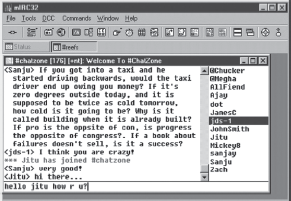
Figure 17.10 Internet Relay Chat
Generally, the user runs a program (called “client”) to connect to an IRC server. The server relays information to and from other servers on the same net. Popular IRC client applications are mIRC, Virc, and LeafChat. Once connected to an IRC server on an IRC network, the user will usually join one or more “channels” (also known as chat rooms) and converse with others there. Each channel is devoted to a different topic. Conversations may be public (where everyone in a channel can see what the user types) or private (messages between only two people, who may or may not be on the same channel).
17.5.5 Chatting and Instant Messaging
Chat programs allow users on the Internet to communicate with each other by typing in real time. They are sometimes included as a feature of a Web site, where users can log into chat rooms to exchange comments and information about the topics addressed on the site. For example, America Online is well known for sponsoring a number of topical chat rooms. Chatting has become one of the “killer applications” of Internet and has become quite popular with all kinds of Internet users. It is quite cheap to chat online. Although e-mail is also a cheap source of communication, it is not done on “real time” and the response to the message solely depends on the recipient. Note that even though chatting is based on standardized IRC system, but unlike IRC, the user does not need to have any special software to connect to any chat rooms.
A variation of chat is instant messaging where a user on the Web can contact another user currently logged in and type a conversation. To avail this Internet service, the user must have software called instant messenger installed on the system (Figure 17.11). Instant messaging is just as if making a text-only telephone call over the Internet, that is, the user is “talking” to the other person (possibly more) instantly. There are various products out there for instant messaging such as MSN Messenger and Yahoo Messenger.
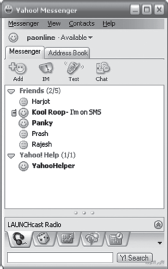
Figure 17.11 Instant Messenger
17.5.6 Internet Telephony
Internet telephony is the use of the Internet rather than the traditional telephone company infrastructure, to exchange spoken or other telephonic information. It consists of hardware and software that enable people to use the Internet as a transmission medium for telephone calls (Figure 17.12).There are many Internet telephony applications available. Some applications such as CoolTalk and NetMeeting come bundled with popular Web browsers.
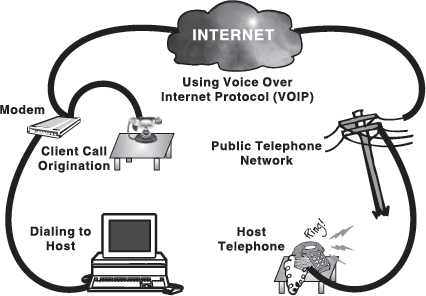
Figure 17.12 Internet Telephony
The required hardware for Internet telephony generally consists of end devices (either traditional telephones or audio-equipped personal computers) and gatekeepers that provide call admission control, bandwidth management, address translation, authentication, and user location. They communicate with each other using the voice over internet protocol (VOIP). For the cost of a local connection to their service providers, users can call anywhere in the world. Note that there is no single Internet telephone standard at this time. Therefore, participants need to use the same software at each end of the connection.
17.5.7 Video Conferencing
Video conferencing uses the same technology as IRC, but also provides sound and video pictures. It enables direct face-to-face communication across networks. A video conferencing system has two or more parties in different locations, which have the ability to communicate using a combination of video, audio, and data. A video conference can be person to person (referred to as “point-to-point”) or can involve more than two people (referred to as “multipoint”), and the video conferencing terminals are often referred to as “endpoints” (Figure 17.13).

Figure 17.13 Video Conferencing
In this form of meeting, participants in remote locations can view each other and carry on discussions via Web cameras, microphones, and other communication tools. The following five elements are common to all video conferencing endpoints:
- Web Camera: It captures live images to send across the network.
- Visual Display: It displays the images of the people taking part in the video conference.
- Audio System: It includes both microphones to capture audio from the endpoint and loudspeakers to play back the audio received from other endpoints across the network connection.
- Compression: Videos are very bandwidth intensive and they take a long time to load. Therefore, video systems include technologies, often referred to as codecs, to compress and decompress video and audio data, allowing transmission across a network connection in near-real time.
- User Interface and Control System: The user interface allows the users to control interactions, for example, placing calls, storing and locating numbers, and adjusting environment settings such as volume. The control system handles the underlying communication that takes place between endpoints.
Video conferencing has many benefits, as a tool for both teaching and learning. A key factor is that it provides real-time, visual communication, unlike other communications methods such as e-mail. Video conferencing technology is still in its infancy, and one of its major limitations is the bandwidth (the volume of information per unit time that a computer or transmission medium can handle) available on the Internet. As the protocols and applications for video conferencing develop higher resolution and improved speed, participation will increase.
17.5.8 Commerce through the Internet
Today business is taking place through electronic telecommunication media. Nowadays, various organizations offer the facility of shopping online. This type of business model is known as electronic commerce or E-commerce. E-commerce refers to buying and selling goods and services online. It integrates communication, data management, and security capabilities, which allow organizations to exchange information about the sales of goods and services. Essentially, it is the end-to-end digital exchange of information needed to conduct business including electronic data interchange (EDI) and electronic funds transfer (EFT). EDI is the computer-to-computer exchange of routine business transactions including payments, information exchange, and purchase order requests. EFT is a technology that allows the transfer of funds from the bank account of one person or organization to that of another (Figure 17.14).
While discussing about e-commerce, we normally talk about virtual shopping malls, up front store where the user virtually visits and selects the product(s) of his/her choice. After selecting the desired product(s), the payment for the purchase is done. Online payment can be done through credit card. Techniques for cash transactions have also been developed in the form of Internet money such as Cyber cash and Digital money. After transfer of money, the items are received at the doorstep, which means delivery of the product is done at the address desired by the buyer.
Through the development of e-commerce, the Internet has established an electronic global worldwide market that operates 24 hours and 365 days a year. Organizations and individuals are able to market goods and services, while purchasing is supported by secure facilities such as digital signatures (the process that operates on a message to assure message source authenticity and integrity) and encryption (a method of ensuring data secrecy). Developments in software mean that an increased number of facilities are becoming available all the time. Some of the well-known e-commerce sites are http://www.amazon.com and http://www.ebay.com.
The increased use of mobile devices such as PDAs (personal digital assistants) and mobile phones has opened a new horizon of proliferation in the electronic market and has coined a new term “mobile commerce.” Mobile commerce or M-commerce refers to transactions through a mobile phone network and data connection that result in the transfer of value (monetary or otherwise) in exchange for goods and services. Mobile commerce has evolved as a new and simpler concept to operate financial transaction through mobile phones and it includes services such as banking, payment, and ticketing. M-commerce users may view and interact with information that appears through SMS (short message service), WAP (wireless application protocol), or a standard HTML browser on a PDA, Web-enabled mobile phone or laptop computer connected to a mobile phone on a wireless network.
17.5.9 Newsgroups (Usenet)
Newsgroups are international discussion groups that focus on a particular topic and helps in gathering information about that topic. The topics discussed here cover all the fields such as politics, computers, technology, and many more. The information or articles that make up the “news” are written by people interested in a specific topic. These articles are posted to the newsgroup so that others can read, reply, and comment on them. To read and post articles in a newsgroup, newsreader software such as Microsoft Outlook Express or Netscape News is required. Some newsgroups are devoted to current events and headlines. However, newsgroups usually describe topical discussion groups, not “the news” in the traditional sense. Most newsgroups exist on a network known as “Usenet,” which contains thousands of newsgroups (Figure 17.15).
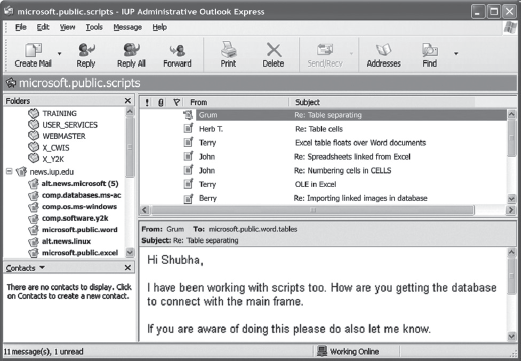
Figure 17.15 Reading News with Newsreader
Newsgroups provide a source of information and a medium through which users can ask questions from the Internet community. They provide a forum for users to discuss topics of mutual interest. It is normal to post the rules, restrictions, and subject matter for the newsgroup in a message called frequently asked questions (FAQ). To simplify the selection of suitable newsgroups, they are divided into subject classifications known as top-level categories. These top-level categories are then further sub-divided and this continues down the hierarchy. There are 20 top-level categories including those shown in Table 17.1.
Table 17.1 Newsgroups Prefixes and Forums
| Prefixes | Forums |
|---|---|
| Biz | Business |
| Comp | Computers and software |
| News | News and topical subjects |
| Rec | Recreation and entertainment |
| Sci | Science |
| Soc | Social issues and socializing |
| Talk | Debate and discussion |
| Misc | Anything else |
17.5.10 Mailing Lists (Listserver)
The Internet is home to a large community of individuals who carry out active discussions, organized around topic-oriented forums that are distributed via e-mail. This method of Internet communication is known as mailing list and it enables people with similar interests from all over the world to communicate and share information with each other. The mailing list groups are administered by a software program known as listserver. There are varieties of programs available such as Listserv and Majordomo. A listserver watches for incoming mail on a certain mailbox continuously and forwards any message to a list of other addresses. Such a mailing list can bring people together with a common interest (Figure 17.16).
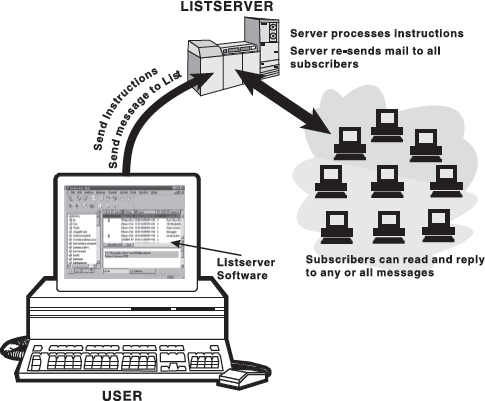
Figure 17.16 Mailing List
THINGS TO REMEMBER
Mailing List
There are hundreds of mailing lists, each for a different subject. Subscribers can send special messages to a separate address to retrieve files from the archive or to get other information about the mailing list. When the user subscribes to a listserver, messages from the other subscribers are automatically sent to their electronic mailbox (e-mail address). Note that to participate in a listserver discussion, the user must have an e-mail account. To subscribe to a listserver, the user has to send an e-mail message to the desired listserver located on computer networks throughout the world.
17.6 DATA OVER THE INTERNET
The data, in terms of Internet, primarily comprises the hypertext documents containing links that connects to other documents or files. These documents may even include animations, and multimedia components. Depending upon how information is displayed in the browser, we can classify the displayed data into two categories: Static Component and Dynamic Component.
17.6.1 Static Component
Static component includes the information displayed on the browser that does not interact with the user. For example, the text written in the form of a paragraph on the Web page is static component. Producing static component for the Web page is accomplished by creating documents in HTML.
17.6.2 Dynamic Component
Dynamic component imparts life to a Web page. This component refers to a specification by which a user can interact with a Web server. For example, when a user fills a form on the Web page, the text filled in various fields is sent back to the originating point of the Web page. This way a user is able to interact with the server hosting that Web page. To impart dynamism, a special program (often called scripts) is written in any programming language including Perl, VBScript, JavaScript, and so on. Some of the programming languages used to provide dynamism to a Web page are listed below:
Perl: Web server uses external programs, called CGI scripts or CGI program, usually written in Perl to communicate with other programs such as database and mail running on the server. CGI programs are generally used to process the information from an interactive form on a Web page. A typical application would be to search a database. For example, a user might search for the word “white papers” on a Web site. The server receives the request, passes it to the CGI script, which looks up a database, and responds with the appropriate result formatted in HTML.
JavaScript and JScript: JavaScript is a programming language, which runs on the browser. It was developed by Sun Microsystems and was first implemented in Version 2 of the Netscape browser. JScript is Microsoft's implementation of JavaScript for the Internet Explorer.
JavaScript runs on the browser (client) and does not require any server software. Therefore, it is often called client-side scripting language. As all execution takes place on the browser, JavaScript is responsible for most of the interactivity on a Web page. Effects like changing of images, text colours, and other things can be made possible through JavaScript. The language has also been widely used for basic form validation.
VBScript: Like JavaScript, VBScript is also a client-based language that has been developed by Microsoft and it runs only on the Internet Explorer. Although JavaScript runs on both Netscape and Internet Explorer, VBScript is easier to code when developing active server pages.
Active Server Pages (ASP): ASP is a technology promoted by Microsoft. It uses some special tags, which can be embedded in the HTML code to generate dynamic Web pages. ASP scripts run on the server side. A typical user can use VBScript, JavaScript/ Jscript, or a combination of both to write ASP pages. The great advantage in using ASP is the ease of maintenance of the Web site.
PHP: PHP is an open-source development environment to develop dynamic Web pages. PHP works almost like an ASP, but it is more secure and handles databases more easily. PHP code is embedded inside the HTML and can be linked to databases for generating dynamic content.
XML (eXtensible Markup Language): XML is a markup language that enables programmers to create customized tags. These tags can provide the much-needed functionality presently unavailable with HTML. XML documents can be accessed using ASP, PHP, and so on.
Java: Java is a very powerful and object-oriented language developed by Sun Microsystems. Web-based Java applications are generally in the form of “Java applets.” They are small programs written in Java, which are called by an HTML page from a Web server and run on a Java-compatible Web browser.
Let Us Summarize
- Internet is a worldwide system of computer networks, which allows the participants to share information. The foundation of Internet was laid in 1969 by the DoD of United States of America.
- The World Wide Web (abbreviated as the Web or WWW) is a collection of linked documents or pages, stored on millions of computers and distributed across the world.
- A Web page is a document on the WWW, which is created with HTML. The Web pages are linked together through hyperlinks, which enables the user to jump from one Web page to another by clicking on a link.
- A Web site is a set of related (linked through hypertext links) Web pages, published by an organization or an individual. All the Web sites on the Internet constitute the WWW.
- A home page (also called index page) is the starting point or a doorway to the Web site; it refers to the Web page that identifies a Web site and contains the hyperlinks to other Web pages in the Web site.
- A browser (short for Web browser) is a special software that enables users to read/view Web pages and jump from one Web page to another. It is the software that is needed to find, retrieve, view, and send information over the Internet.
- Each Web page has a unique address, called a URL, which identifies its location on the Internet.
- The hypertext is a system that provides a simple and consistent way to organize large data (that includes text, images, pictures videos, etc.) available on the Internet. In hypertext systems, the documents contain links to other related documents on the Internet. These links are called hyperlinks, hotlink, or simply links.
- An ISP is an organization that connects its subscribers’ computer using modem to the Internet. Some of the well-known ISPs are America Online (AOL), Microsoft Network (MSN), Yahoo!, etc.
- A Web server receives request from the clients, processes this request, and sends the result back to the client. In other words, Web server fulfils the client's (browser) requests.
- Download refers to the act of transmitting data from a remote computer on the Internet or other network to one's own computer. On the other hand, upload refers to the act of transmitting data from local computer to any other computer on the Internet or network.
- Modem is a device that allows computers to communicate over telephone lines. It converts digital data into analog signals that can be sent over an analog telephone line and converts the analog signal back into digital data.
- TCP/IP is the basic communication protocol of the Internet. It allows programs on user's computer to communicate over the Internet.
- The FTP is a set of rules that enables a user to transfer files from one system to another.
- Telnet is a protocol that allows a user to log on to a remote computer. Also known as remote login, it connects the user's machine to another in such a way that the user may interact with another machine as if it is being used locally.
- IRC is a service on the Internet that allows people to communicate in real time and carry on conversations via the computer with one or more people.
- A chat room is a virtual meeting room where computer users can communicate with each other in real time. People from all over the world can come together in a chat room to discuss topics of mutual interest.
- Internet telephony is the use of Internet instead of traditional telephone infrastructure to exchange spoken or other telephonic information. It consists of hardware and software that enable people to use the Internet as a transmission medium for telephone calls.
- Video conferencing is a form of meeting in which participants in remote locations can view each other and carry on discussions via Web cameras, microphones, and other communication tools.
- E-commerce refers to buying and selling goods and services online and if the transaction is done through a mobile phone network, it is known as mobile commerce or m-commerce.
- Newsgroups are international discussion groups that focus on a particular topic and helps in gathering information about that topic. To read and post articles in a newsgroup, newsreader software such as Microsoft Outlook Express or Netscape News is required.
- Mailing list enables people with similar interests from all over the world to communicate and share information with each other.
- Depending upon how information is displayed in the browser, we can classify the displayed data into two categories: static component and dynamic component.
Exercises
Fill in the Blanks
- A computer on a network that requests files from another computer is known as ..................
- Each Web page has a unique address, called .................. that identifies its location on the Internet.
- The .................. is a collection of linked documents or pages, stored on millions of computers and distributed across the world.
- A program that enables users to read/view Web pages and jump from one Web page to another is known as ..................
- .................. refers to the act of transmitting data from a remote computer on the Internet or other network to one's own computer.
- The US Department of Defense laid the foundation of the Internet with a network called ..................
- AltaVista, Google, and HotBot are the examples of ..................
- The Web uses a specific Internet protocol called .................. to support hypertext documents
- The technique for .................. is known as Telnet.
- The mailing list groups, administered by a software program, are known as ..................
Multiple-choice Questions
- URL is ..................
- a computer software program.
- a type of Web server.
- the address of a document or “page” on the WWW.
- an acronym for unlimited resources for learning.
- What would you use for immediate, real-time communication with a friend?
- IRC
- Usenet
- Mailing list
- What does the URL http://www.uni.edu tell you about the source?
- It is associated with an educational institution
- It is associated with a military establishment
- It is associated with a commercial organization
- None of the above
- When a user subscribes to a newsgroup, ..................
- The Internet is owned by ..................
- The US government
- A consortium of telecommunications companies
- The IETF
- None of the above
- A home page is ..................
- a Web page created by an individual home user, as opposed to the one created by a corporation.
- the Web page you like to visit the most.
- the Web page that identifies a Web site.
- a Web page you eventually reach by clicking a series of hyperlinks.
- Which of the following is not a type of Internet connection?
- ISDN
- Dial up
- Leased line
- ISP
- E-mail is ..................
- Mail concerning electronic devices
- Transaction of letters, messages, and memos over a communication network
- Transaction of messages within a computer
- None of the above
- Which one is not the language of Internet?
- Perl
- HTML
- XML
- COBOL
- Choose the odd one out.
- Web page
- Home page
- Index page
- Cover page
State True or False
- WWW cannot incorporate sound.
- All URLs are unique.
- Telnet cannot be used for remote login.
- .EDU is a valid domain type.
- Internet Explorer is a character-based browser.
- Messengers can be used to send e-mails.
- Dial up is the fastest possible Internet connection.
- Microsoft owns Internet.
- Outlook Express can be used for reading news.
- Listserv is a Web browser.
Descriptive Questions
- Explain a typical structure of a URL.
- List the various services provided by the Internet.
- What is a newsgroup? How can you subscribe to it?
- Distinguish between Internet and WWW.
- Define the following
- Web page
- Home page
- Web site
- Write short notes on the following:
- Chatting
- Instant messaging
- Internet telephony
- Video conferencing
ANSWERS
Fill in the Blanks
- Client
- URL
- WWW
- Web browser
- Downloading
- ARPANET
- Search engines
- Hypertext transfer protocol
- Remote login
- Listserver
Multiple-choice Questions
- (c)
- (b)
- (a)
- (a)
- (d)
- (c)
- (d)
- (b)
- (d)
- (d)
State True or False
- False
- True
- False
- True
- False
- True
- False
- False
- True
- False

